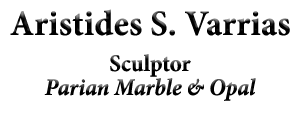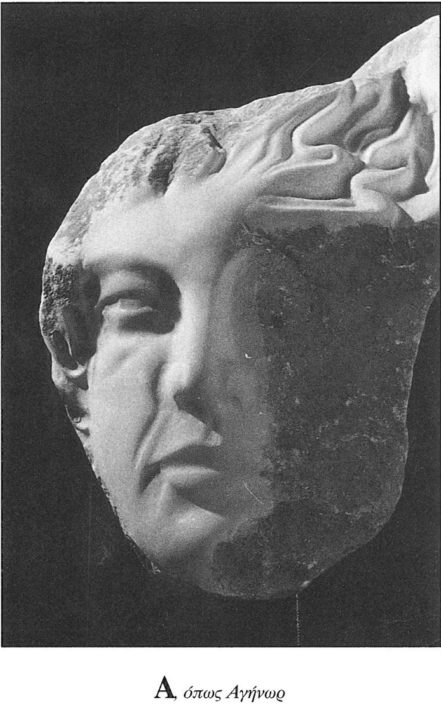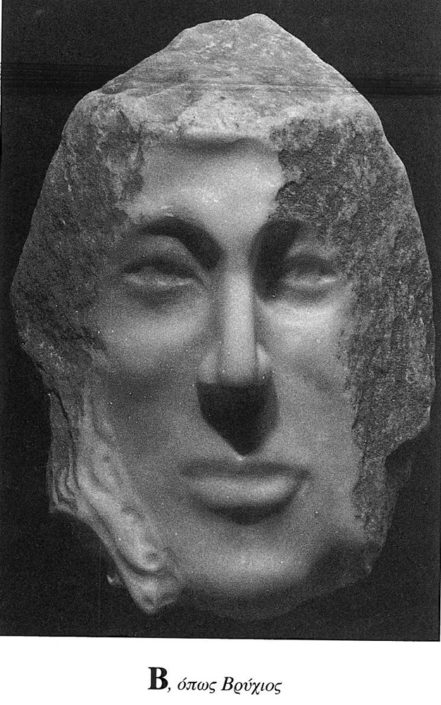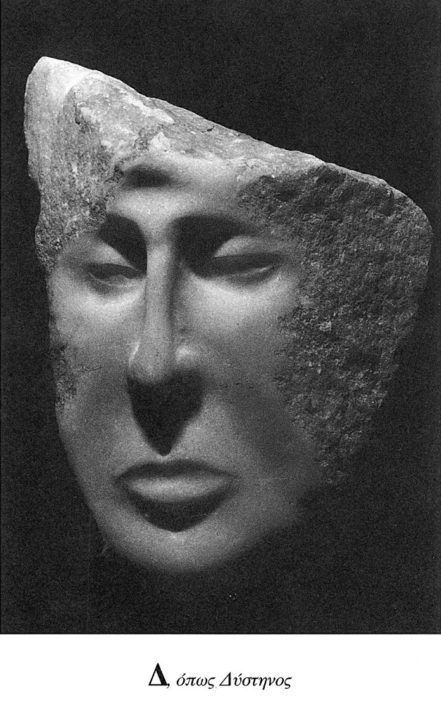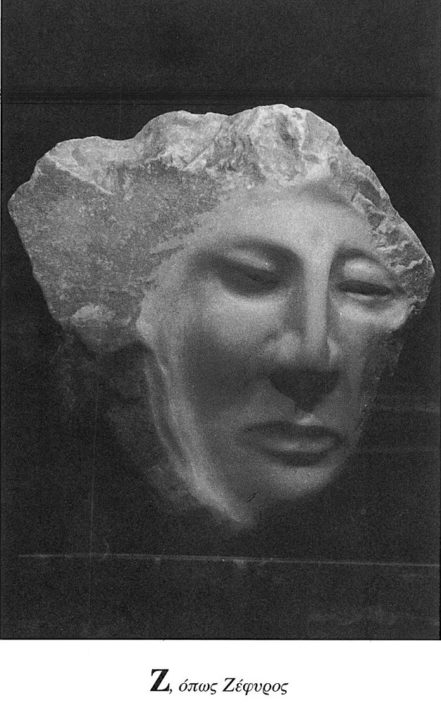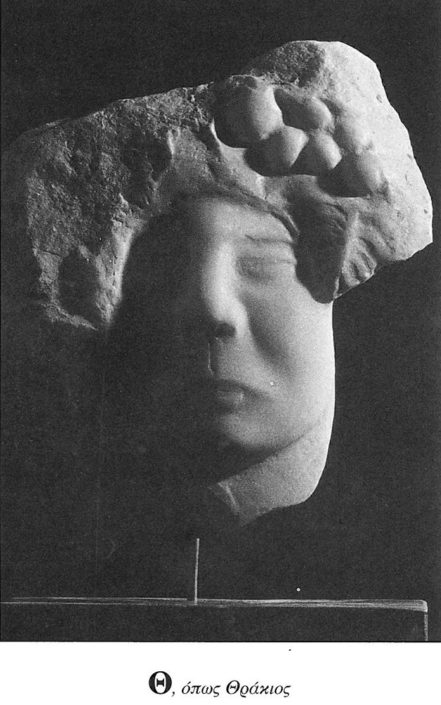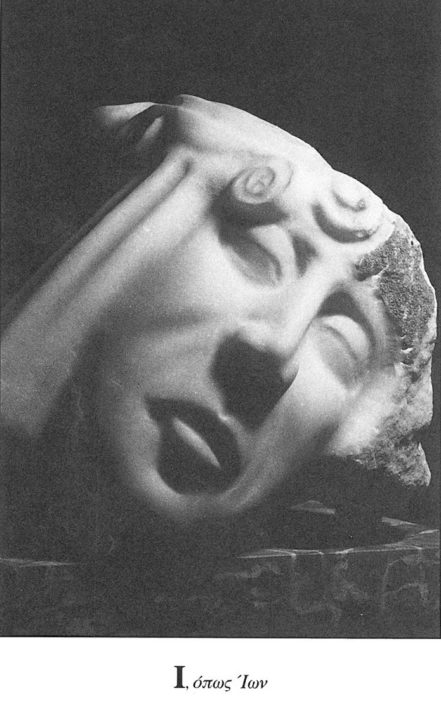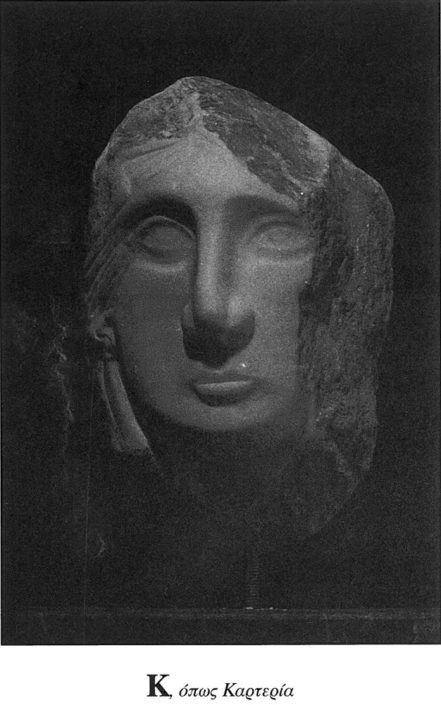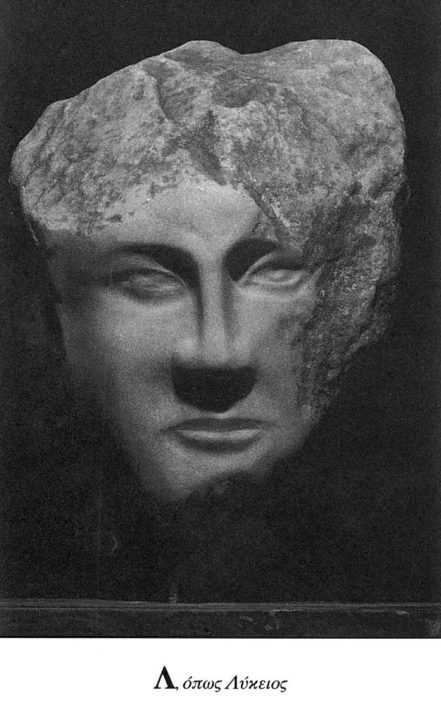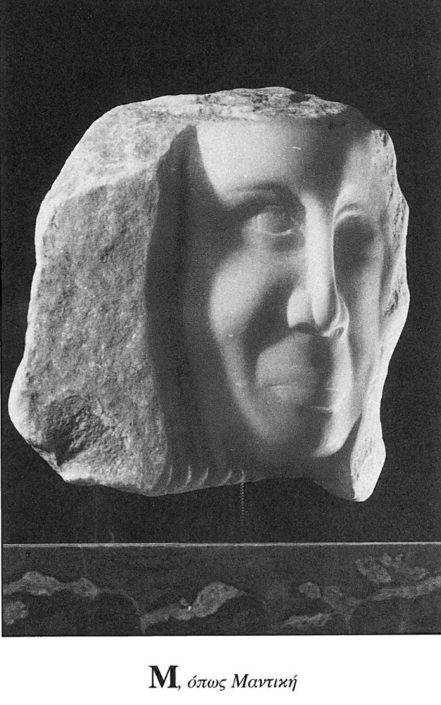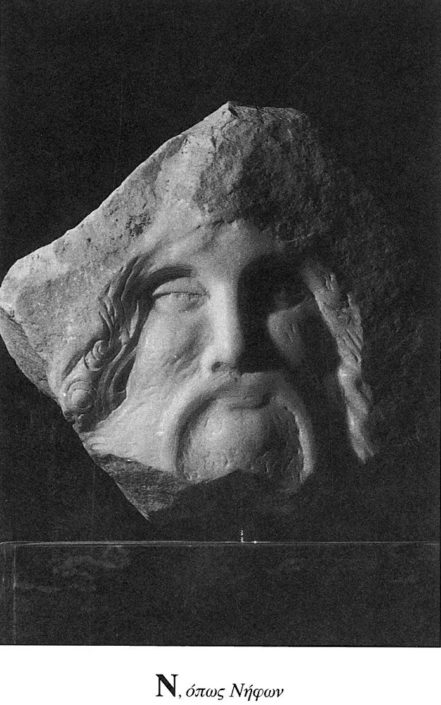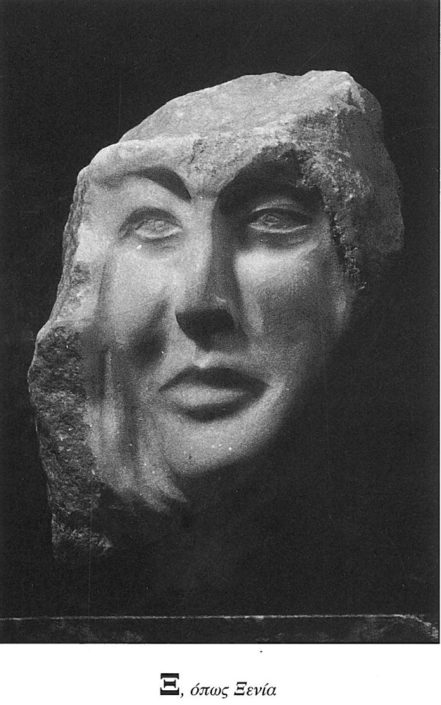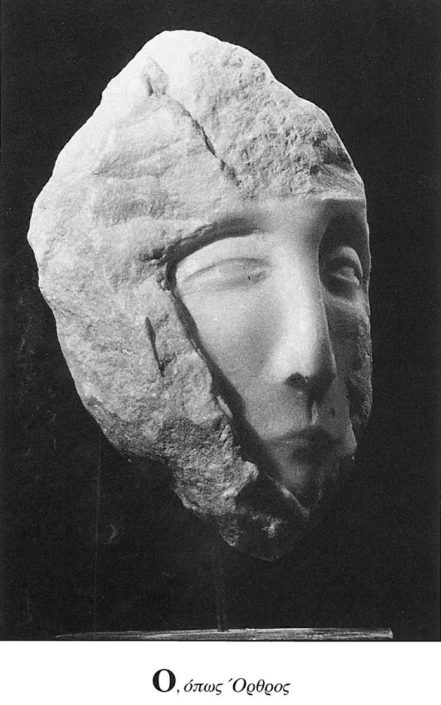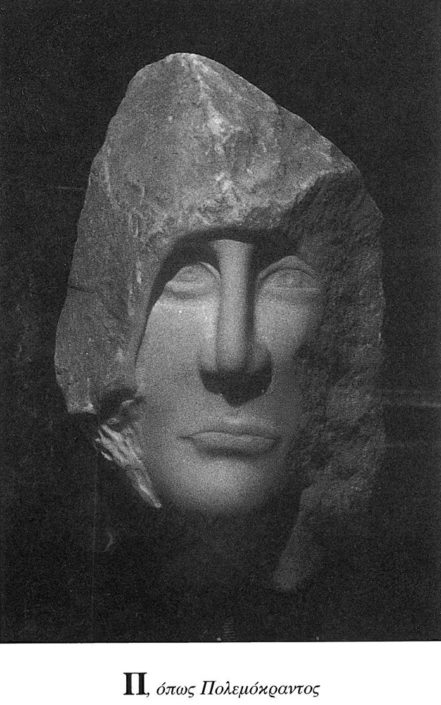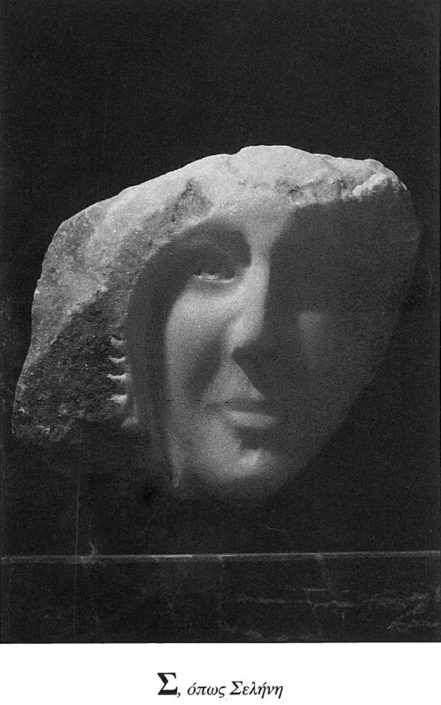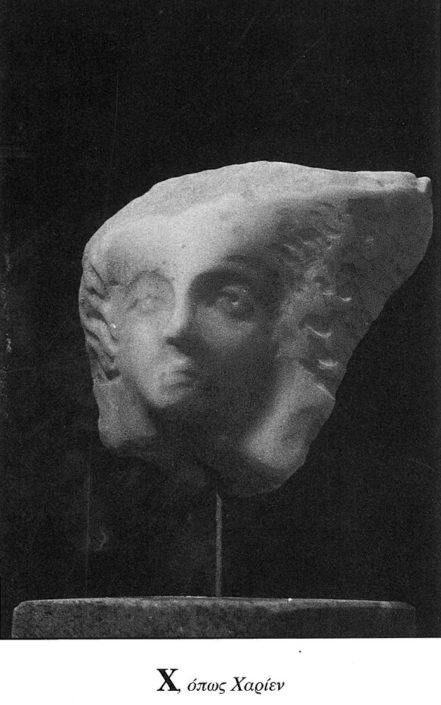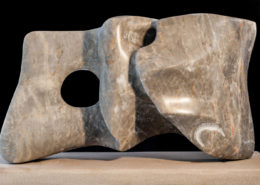Alphabet of Stone
“From one comes everything and from everything comes one” – Heracleitus
A.
The “Alphabet of Stone” is a series of sculptures made of Parian stone. They are faces, which “emerge” from each piece of marble without altering the original shape. In this way the Parian stone, “λυχνίτης”, was not formless material in the hands of the artist but in this case each piece served as its own special, independent and unique entity, which “spoke” to me, suggesting its own face. For this, despite the likeness of technique, each of the twenty-four faces has its own characteristics and its own personal expression.
B.
From one angle it is the primal instinct of man to give human form to the vague, ambiguous and mysterious rendering it tangibly familiar to our consciousness.
Yet, we do the same with inanimate objects with which we develop a strong emotional tie, possibly because logic only allows a “personal” relationship with a human form. All of us as children, draw the sun as a rosy-cheeked, round, smily face and the windows and doors of the houses we draw are placed in such a way that they resemble a face. In our everyday dialect as well as in prose and verse the personification of nature’s elements is the most interesting and charming characteristic of the Greek language, which is far from being a superficial ornamentation. So, Axion Esti…
The land that dives and lifts its back
The Leading winds who officiate
Who blow and the oranges light up
Who whistle to the mountains and they come..
Axion Esti the wave that’s raging
And lifts five fathoms in the air.. and
Axion Esti..the sad face of the young rain.
(ELITIS)
Whatever we love and whatever creates strong emotion and compels our respect, we personify, despite all logic and reason.
Painting and sculpture have presented us with masterpieces of anthropomorphic depictions of nature. Yet, they are visual interpretations of language. In the sculptures of “Alphabet of Stone” the human form rises to another level and tries to materialise a different outlook on nature and man.
C.
I remember reading, as a student, Heiddeger’s book “The being and the Time” and there were times when my twenty-year-old mind became exhausted from the effort to absorb it and as a complaint and a protest Seferis’ verse came to mind: “The world is simple”. Then slowly I ceased to protest, not only because I had matured and acquired knowledge and dexterity and the ability to comprehend more demanding readings but mainly because the frustration of seeking subsided and became a charming mind game without price or practical value in life, with the exception of theological and sociological quests.
When I let myself look at the world through the binoculars of a man-centered psychology I was convinced, until I read the society-centered psychology, which also convinced me. The outcome of the addition was confusion, despite Seferis’ cries from the depth of my truth, that “the world is simple”. This time it was not a mind game and a pleasant iridescence, but agony for the proper attitude towards society. It was agony for the comprehension of society and the world in general in which I struggled to define the boundaries of my identity and individuality.
Many years passed before I realised that this false dilemma of priority of man over society or society over man was introduced into my life neither through my study of the works of man-centered psychologists or society-centered psychologists nor through the cock-fights of young political roosters but by the “bulldozer”, the urban aesthetics and the western lifestyle which “thoughtlessly, mercilessly, shamelessly” distorted in just a few decades since the creation of “the Greek Kingdom” and “subtly” the traditional way by which Greeks defined themselves towards their fellow man and nature. …… Even though we talk about the traditional Greek, the Greek who carried in his collective subconsciousness all the superb ancient and Christian Byzantine civilization, but the Greek who seems to have lost the ability to comprehend and become familiar with the ideology and the aesthetics of his own language, who has lost the ability of actual contact with the masterpieces of the ancient Greek and Byzantine literature and finally, unfortunately, has lost the capability of “reading” the monuments of art, which are found everywhere in our country and could function as eloquent interpreters of the evolution of our civilization.
The twentieth century bids farewell to a humanity, which has more or less realised the devastating consequences, which the western model of civilization with all its variations of socialistic or capitalistic types had on the human “face”, on the societies and on nature.
In our country, despite the revolutionary term which Greek thought and art took in the field of our cultural identity, in the decades which followed the catastrophe of Asia Minor and the destruction of the Greek colonies there, the society as well as the official state, (trapped in the underdevelopment in which the acceptance of the priority of economy and politics over truth and beauty has condemned us), seem to be mimicking “Europeans” rather than functioning as factors in the development and quests of modern man.
D.
The “Alphabet of Stone” is twenty-four human figures, as many as the letters of the Greek alphabet, sculpted on equal λατύπες. Οι λατύπες are pieces which the sculptor takes off a larger mass of stone, in order to give the shapeless mass of his material the form he is working on. These particular twenty-four λατύπες have something special about them. They come from the underground mines of the ancient quarries of Marathi, Paros. You touch them with emotion and you ask yourself : Could this piece have been left over from a large piece of Parian stone which was used by Praxitelis to make his Hermes, a piece from the mass which produced Venus of Milos, or the Boy of Krition, or the Victory of Samothrace, or…..
You place the stone opposite you and you realise that in itself it is a special entity. After all, the universe is comprised of “pieces”. I am, like you, a piece of human birth, the λατύπη opposite me is a piece of a larger mass of marble, which in its turn was part of a larger deposit in the mountain of Marpissa, which is part of Paros with its hills and slopes and beaches, vegetation, animal life and its people where Paros again is part of the Cyclades, which is part of the islands of the Aegean Sea, which is part of Greece, which is part of Europe, which is part of the earth, which is part of our solar system, which is just a tiny part of the infinitely changing universe, which is part of ……. the “depicted” energy of the infinite God and creator.
The simple truth defines the identity as well as the individuality of each piece.
Thus, from one angle the universe is an organic whole. Therefore, all people are my brothers, but also so is all creation and the little piece of marble, which I place before me and with my chisel, started a dialogue with.
From another angle each piece is a separate entity, different from every other as far as the form, quantity and quality of it are concerned. This individuality and uniqueness entitles it to respect not only of its continuity but also of its different and unique existence and this is why the forms, which were sculpted on the stone do not alter the original shape of the λατύπες .
E.
The “Alphabet of Stone” puts forward a suggestion: to read our world with a different alphabet. To be honest, this alphabet is neither new nor an inspiration of mine. It is as old as our civilization, which sprang and evolved from this blessed land. It is so common, that the Greek civilization experienced it in its everyday expression, like the “natural” order of things in the way it sacredly created beauty, and in the way in which it built villages and towns, cultivated the land and defined its needs for “a little bread, a little wine, Christmas and Resurrection” up to yesterday and soberly blessed the “leftovers on his table”.
Aristides Varrias
